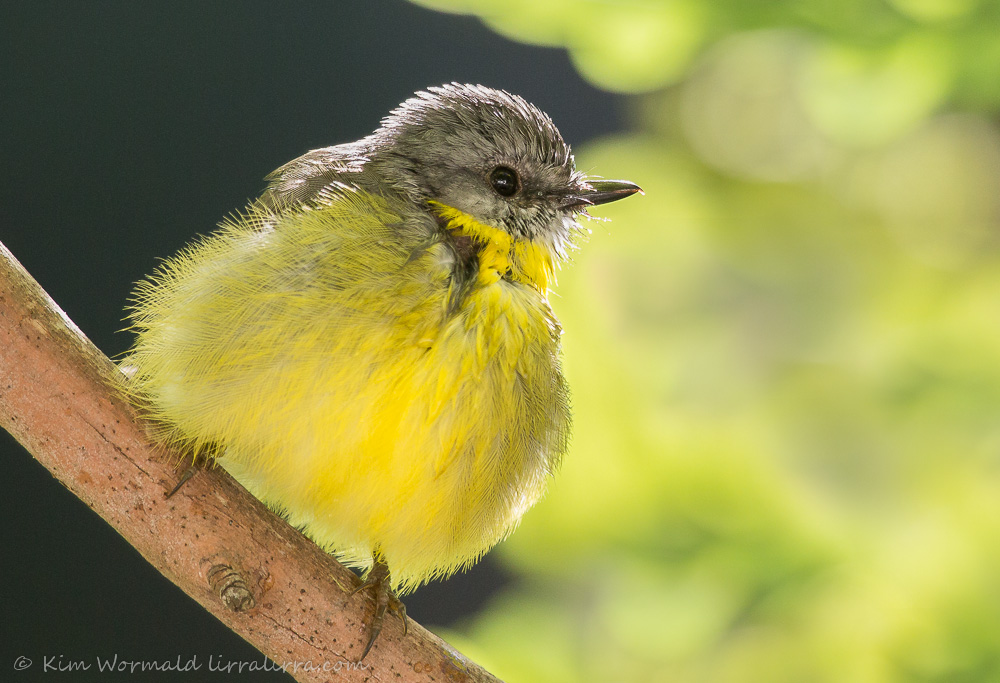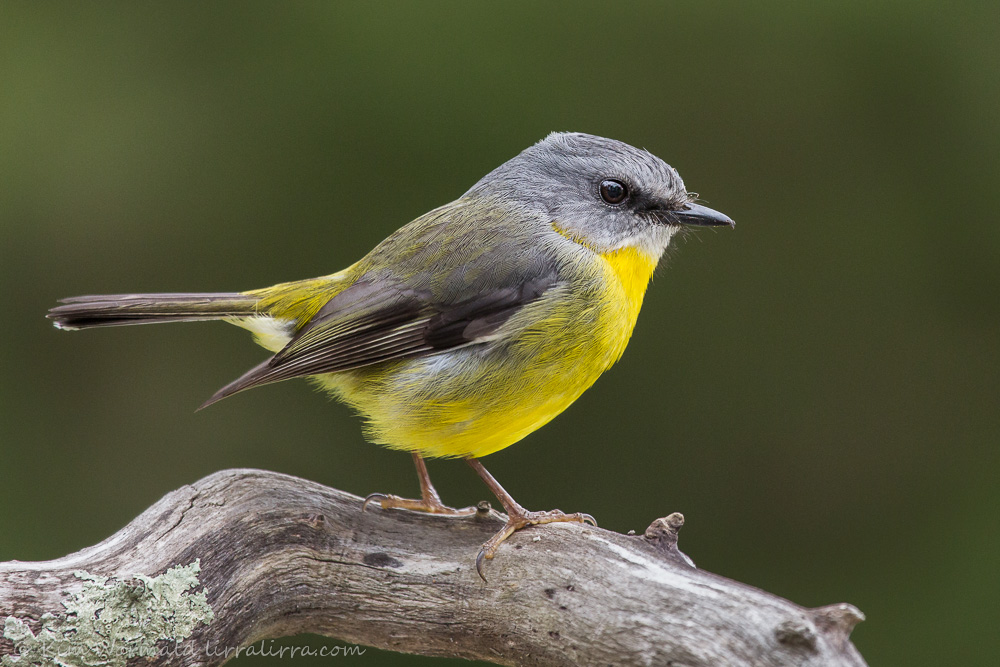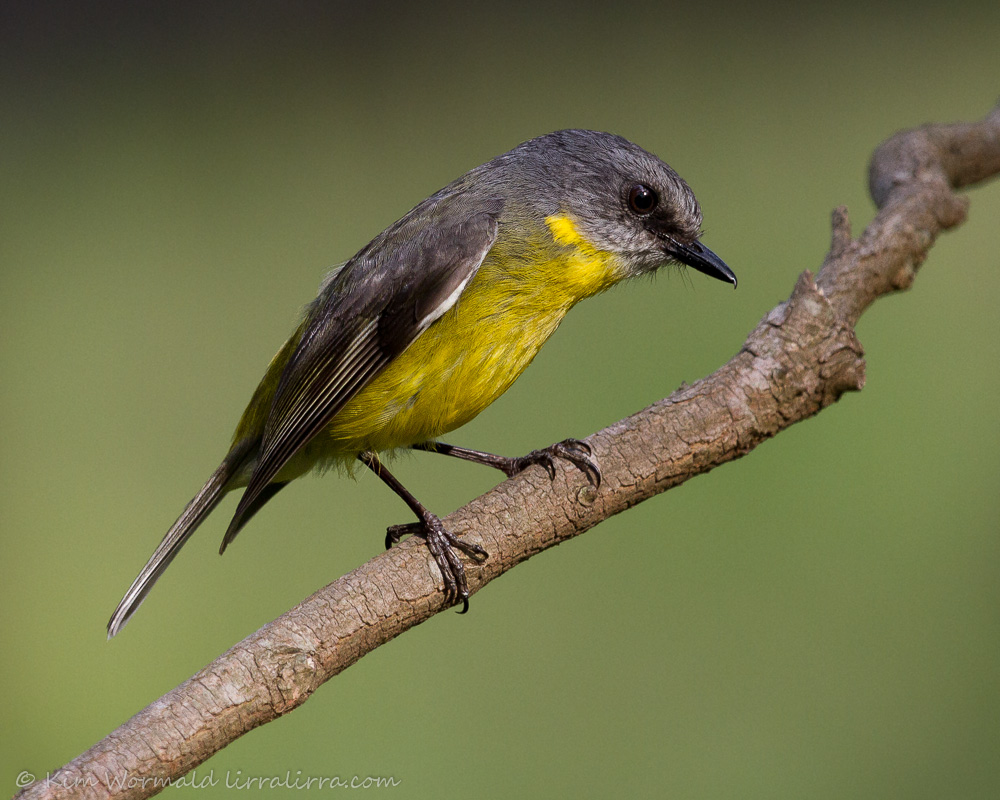This week’s ’round robin’ follows last week’s post about how a bird can transform it shape depending on its pose and how it holds its feathers.

Eastern Yellow Robin (Eopsaltria australis)
Canon 5DIII, 100-400mm L IS USM, 1/1000, f5.6, ISO 1600, focal length 400mm
Eastern Yellow Robins don’t usually look quite as round as the one in the image above. It had been preening and was in the process of fluffing its feathers back into place; the shutter speed of one 1000th of a second meant that the moment was captured. I like the detail of its feather filaments against the dark background, and the sunshiny yellow of the spring leaves.
The Eastern Yellow Robin is a distinctive bird, not only from its bright yellow underparts but also because of its typical robin behaviour. Like other robins they take most of their food from the ground, watching for insects and spiders from low perches and often taking critters that are several metres from the perch. They use low branches, fences and tree trunks as watching posts and typically swoop to the ground, take their food quickly and return to the same, or a new, perch.
 Eastern Yellow Robin (Eopsaltria australis)
Eastern Yellow Robin (Eopsaltria australis)
Canon 5DIII, 100-400mm L IS USM, 1/640, f/5.6, ISO 1600, focal length 400mm
The image above is a more typical pose for the Eastern Yellow Robin as it stands still and watchful for a moment before turning to look in other directions. Its wings are held away from its body, it’s primed to move. The fine detail of its olive-yellow rump and the colouring on its predominantly grey back is exquisite. These robins are about 16cm and 19g, with males being slightly larger than females. North American robins (Turdus migratorius) are much larger birds, measuring up to 28cm and weighing just under 80 grams. The European Robin or Robin Redbreast (Erithacus rubecula) weighs about the same as an Eastern Yellow Robin but measures slightly less.
 Eastern Yellow Robin (Eopsaltria australis)
Eastern Yellow Robin (Eopsaltria australis)
Canon 7D, 100-400mm L IS USM, 1/640, f5.6, ISO 640, focal length 370mm
I shared the image above some time ago and re-share it this week as it shows how a robin can look like a long, thin bird as well as a little round one. I particularly like this pose as the robin is concentrating on looking for prey and is not bothered by my presence. I also like the way the perch fades into the background.
Eastern Yellow Robins nest on my property each year. I feel strongly about ethical bird photography and have chosen not to take photographs of the nests. Each springtime and summer I am aware of many nests but never take photographs unless I can do so from a significant distance, with a long lens and then heavily crop the image – which rarely happens as nests are usually surrounded by protective vegetation. It’s just too risky to get close to a nest; not only because the parent birds might abandon the eggs or nestlings but also because it’s easy to draw attention to the nest and encourage predators to investigate.
There have been times when parent birds have fed fledgling robins right beside me, but never when I’ve had a camera handy; maybe this year …
Happy birding, Kim
~ Thank you for your visit and comments.
~ If you’d like to receive a weekly email informing you that lirralirra has been updated please add your email address to the ‘subscribe’ box above right
.

Beautiful photos, Kim.
Thank you Carole!
True true, very hard to get to nests and honestly why would we need to. It is so much more fun to photo and watch the fledglings as they learn their lessons. I really do like that first image.
Well said Sherry. I feel so sad when I see people posting close ups of nests, I’m sure they mean well but then others want to get close ups too and it must cause many nests to fail one way or another. I’m glad you like the sunshine robin.
Pretty! I love the colors on that bird.
Feathered sunshine
Nice series of images of this gorgeous little bird. Interesting background information as well.
I’m glad you enjoyed it Julie, thanks for letting me know.
Sorry, comments are welcome, they were accidentally disabled at first